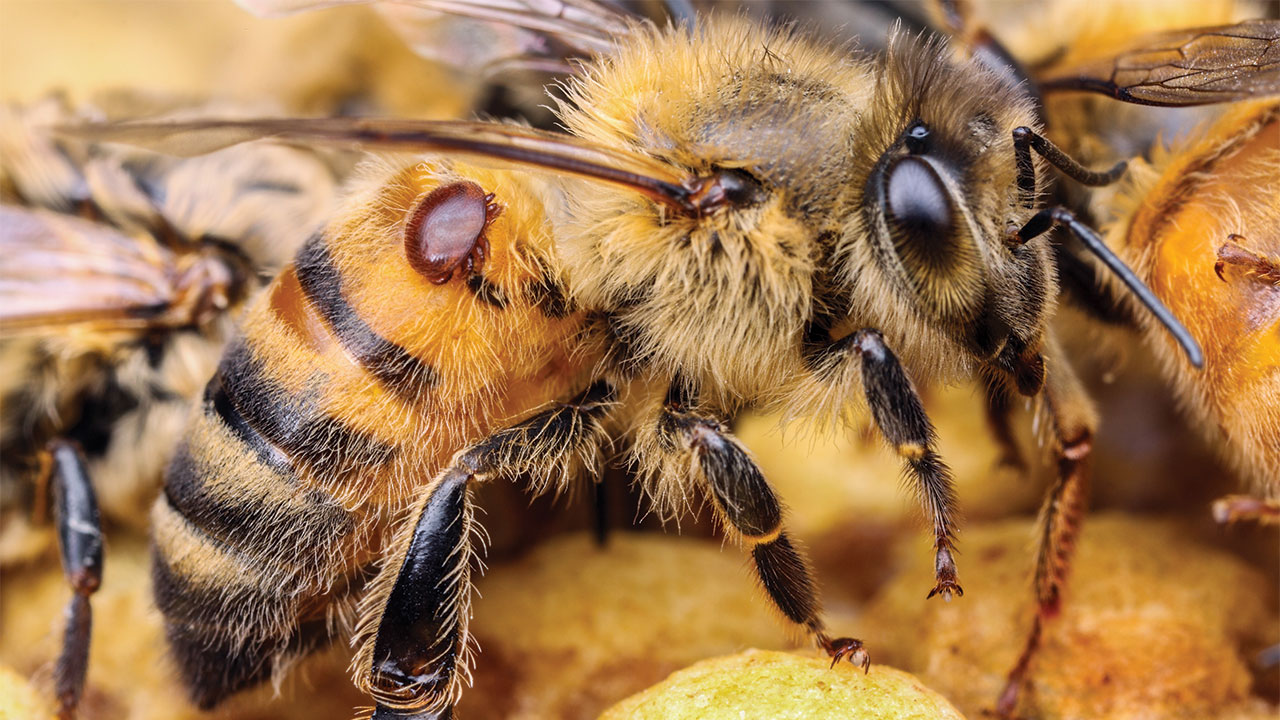Science professors at the University of Rhode Island are entering their third year of research to protect honey bees from varroa mites, combining their knowledge of chemistry and biology along the way.
Chemistry professor and department chair, Matt Keisewetter, and entomology professor, Steven Alm, are working together to develop new pesticides that are safe for bees but highly effective in getting rid of varroa mites.
These mites are the number one hive-stressor for bees. Varroa mites can only reproduce on bee pupae or larvae, according to University of Florida entomology, meaning that these must be treated in the hives. As they feed on the bees, they can cause the bees to have formed bodies and wings and eventually kill entire colonies.
After pursuing a hobby of beekeeping, Keisewetter realized that he could combine his hobby and career, use his chemistry knowledge to alter the compounds of pesticides and find safer alternatives for the bees. All he needed was somebody with an advanced knowledge of biology, of bees and hives: Professor Alm.
“He said he had some ideas, we had the hives here and he knew what he wanted to do, so we teamed up and tried some of his things,” Alm said.
Keisewetter’s main concern was that pesticides thrive on a broad spectrum, where one product has the ability to kill many insects. In this case, the bees are at risk. Pesticides also threaten the cleanliness of the honey, as well, meaning that beekeepers could only utilize these pesticides during select periods of time.
“The thing that we’re doing that’s fundamentally new is we’re really trying to make a narrow spectrum for pesticides,” Keisewetter said. “Nobody has done exactly this.”
Master’s student Casey Johnson helped curate much of the research, exploring methods that range from heat treatments to pouring powdered sugar into the hives. Heat treatments involved setting the hives to 106º Fahrenheit, where the bees vacate and the mites drop from the hive completely. This took a couple hours to complete. By pouring powdered sugar into the hive, this prevented the mites from being able to latch onto the bees as easily, but this only got rid of about 20% of the mites in the hive, according to Professor Alm.
While these methods yielded positive results, Alm and Keisewetter continue to search for less time-consuming and more efficient results.
“It takes almost all season long to get a high-enough mite population to treat, and then you only have a couple months to do the work,” said Alm.
Both professors expressed that the feedback loop for results has been slow. They have begun searching for partnerships with the USDA to provide their results with beekeepers, hoping that their longer season will reduce the time it will take to complete the research.
“It’s been interesting, it’s a very different way of approaching science,” Keisewetter said.
Keisewetter is currently approaching a new method with pyrethroid, used as a commercial and household pesticide, with a therapeutic ratio, according to Alm. The bees would walk over these chemical strips that would kill the mites. These would be less harmful to put into the hives.
While the research has not been concluded just yet, Alm and Keisewetter are continuing to work as a team to find the right solution for the bees.





